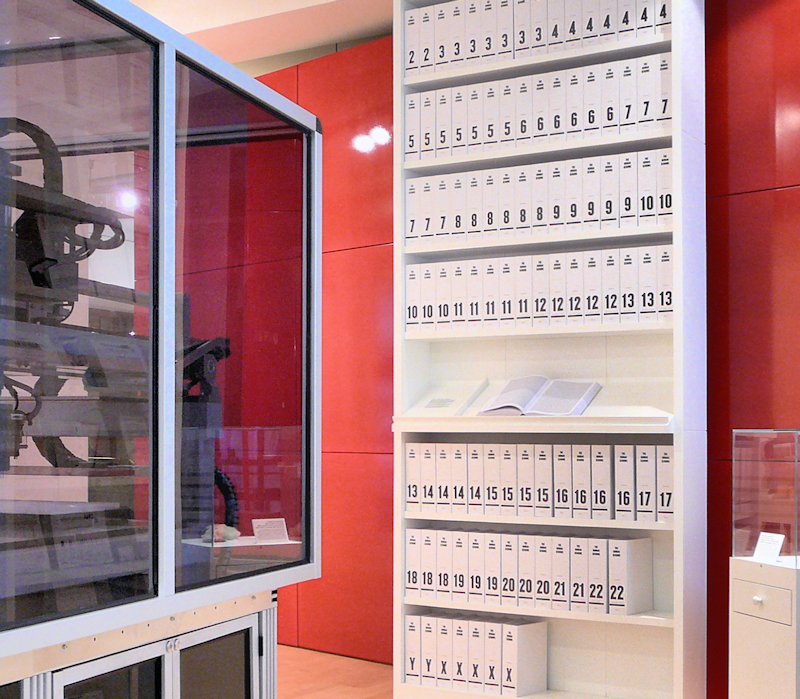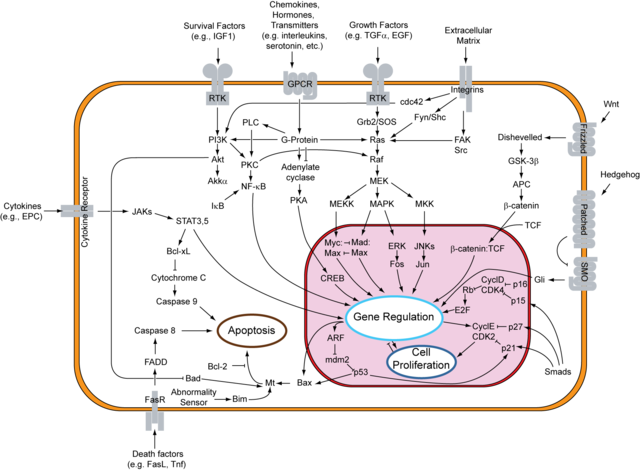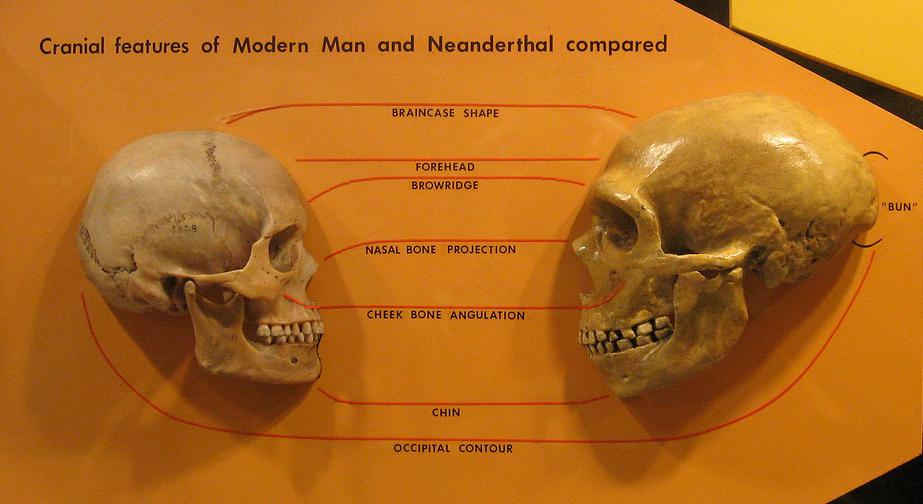In my previous post, I discussed the evidence and arguments that led to the widespread acceptance of the “Recent Out-of-Africa” theory of human origins. Anthropologists in the 19th and 20th centuries defined the scope of the questions about our ancestry – Where did we originate? How long have we existed as a species? – and began to answer them using fossil evidence. However, we couldn’t definitively address these questions until we gained the ability to sequence DNA from living humans and from fossil skeletons, to compare the genetic relatedness of our congeners (species in our genus Homo).
The genetic revolution in our understanding of human ancestry started with a watershed study in 1987, showing a recent African origin of Homo sapiens, and has only picked up from there. Over the last quarter-century, anthropologists, geneticists and others have been using genetic tools to piece together the long history that led us to where we are now. We are uncovering a great tale of migration, invasion, death and cross-species sex. What more could you want?
Building a family tree from genetic information involves comparing the degree of similarity between the DNA sequences, with the assumption that more similar sequences mean more closely related individuals. Similarity of DNA sequences is solid evidence, because the chance that two separate lineages converge on the same DNA sequence is vanishingly small. This is because mutations are rare and these DNA sequences are hundreds to thousands of nucleotides (chemical “letters”) long.

Genealogical relationship of Jewish Men with variants of the last name “Cohen” reconstructed from Y chromosome DNA sequence. Source: Wikimedia
Initially, genetic studies of human natural history looked at mitochondrial DNA and regions of the Y chromosome. This is because they pass only through female and male lineages, respectively, and don’t get mixed up in the way that other genetic regions do. These regions are valuable for reconstructing the genealogy of a lineage of humans – they can be used to determine who the ancestors of Native Americans are, or how Jews are related to each other (see image above). But they don’t give us a full picture.
As DNA sequencing technologies took off in the last decade, the trickle of genetic data has swelled into a torrent. Instead of relying on the DNA sequence information from one or two genes, we can now compare whole genomes of hundreds of individuals to determine fine-scale patterns of inheritance and migration.
One of the perennially fascinating mysteries in this story is how modern humans interacted with the Neanderthals and others we encountered along the way. Did we invade and pillage their settlements, trade and communicate with them, or even accept them into our clans and beds as fellow humans? The archaeological evidence is scarce and inconclusive, but tantalizing: Neanderthals started to produce art and bury their dead around the time that H. sapiens arrived in their area. In 2013, a skeleton of a proposed human-Neanderthal hybrid was found. While this archaeological evidence is immensely valuable, it cannot answer the question of whether that hybrid was sterile (as hybrids, like mules, often are) or whether the alleles (gene variants) of our congeners made it into the gene pool of H. sapiens. With genome-level evidence, we can find out what exactly we inherited as a result of these prehistoric dalliances.
The sequencing of a Neanderthal genome in 2010 and of a Denisovan in 2012 began to shed light on these questions. It was suggested then that H. sapiens mated with Neanderthals and Denisovans, and that their DNA persists in the H. sapiens gene pool today. This explosive suggestion was based on a comparison of the Neanderthal genome with the genomes of five modern humans.

One human genome, printed out, at the Wellcome Collection in London. Source: Wikimedia
As we’ve seen with the debates about African or multiregional origin of humans, when ideology comes into the equation, shaky or uncertain scientific evidence is likely to be used as a cudgel. Back in 2010, when human-Neanderthal mating was first suggested, an article entitled “Europeans did not inherit pale skins from Neanderthals” was shared 1,500 times on facebook. This article cited a paper showing that some alleles associated with pale skin spread through European populations after Neanderthals went extinct.The author used that paper to argue that the pale skin of Europeans had nothing to do with Neanderthals.
However, skin color is determined by many genes. The paper cited in the article concerns a different (non-Neanderthal) set of skin color genes and does not mention Neanderthals once. At the time the article was written, the evidence of Neanderthal genetic contribution to H. sapiens was still very shaky. In those circumstances (read: often), people are likely to choose the data that suits their ideological preferences.
A cardinal sociological rule of science is that the more ideologically provocative the claim, the stronger your evidence must be. This is a corollary to the rule that strong ideology tends to bend weak data to its will. To solidify claims of Neanderthal hybridization beyond the shadow of a doubt, two research teams concurrently published studies in Nature and Science a little over a month ago. These studies compared all available DNA from Neanderthals and Denisovans with a newly collected dataset of 1000 human genomes.
The study published in Nature, compared the genomes of 1,004 modern humans with the Neanderthal and Denisovan genomes, specifically looking at stretches of DNA shared by Europeans, Asians, and Neanderthals, but not present in Africans (because there were no Neanderthals in Africa). They found that about 1-3% of of the DNA carried by Asians and Europeans comes from Neanderthals, but that the inheritance was not even across the genome. The human genomes bore tell-tale signs of selection to remove Neanderthal alleles of genes associated with hybrid sterility.
Individuals carrying very different alleles (versions) of hybrid sterility genes tend to be unable to produce viable offspring. The removal of Neanderthal alleles of these genes suggests that humans and Neanderthals were almost complete biological species. That is, they were nearly unable to reproduce with one another, and hybrids bearing Neanderthal alleles of these genes had low fertility. Hybrid sterility is fairly common in cross-species mating.

Your great(x1500) grandfather! Model Neanderthal head at the Smithsonian in DC. Photo: Tim Evanson, from Wikimedia
The other study, published concurrently in the journal Science, compared the genomes of 379 Europeans and 286 East Asians with the sequenced Neanderthal genome, and further confirmed hybridization. What’s more, the study showed that some of the Neanderthal alleles spread in the human gene pool, probably because they increased the fitness of those who carried them. To top it off, some of these Neanderthal alleles (those of the genes POU2F3 and BNC2) happen to be some of the many that confer light skin in Europeans and Asians!
On one level, this makes a lot of sense. Homo sapiens came from Africa, ill-adapted to higher latitudes; Neanderthals and Denisovans had been in Europe and Asia for over a million years, and had had time to adapt to the climate. If the two mated, alleles conferring adaptations to non-equatorial life would make their way into the H. sapiens population and spread due to natural selection. Light skin is a big part of that –it prevents vitamin D deficiency in less sunny climes.
However, the study also found more perplexing genetic contributions from Neanderthals, including alleles known to contribute to tobacco addiction and diabetes. It will likely be a long time before we understand why natural selection maintained these Neanderthal alleles in human populations, but removed others. This is because the genetics behind traits are complex: traits like skin color and height are controlled by many genes (in interaction with the environment and each other), and most genes have more than one function. We are just beginning to understand how this all works.

It’s complicated: many traits are controlled by multiple genes, and most genes affect many traits. Source: Wikimedia.
The evidence is now compelling that Homo sapiens resulted from the mixing of several long-separated species of the genus Homo. Further, this mixing is part of what helped us adapt to so many climates so quickly (and also, strangely, why we find it hard to quit cigarettes). However, we shouldn’t get carried away: 97-99% of the DNA of Asians and Europeans (and 99% or more of the DNA of Africans) still comes from that recent African Homo sapiens lineage.
The picture of how these matings took place is still unclear – were these Neanderthals raped as part of inter-species skirmishes? Did young Neanderthals and humans elope together to escape the disapproving eyes of their clans, like prehistoric Montagues and Capulets? There are some questions that DNA will never be able to answer; we can only hope for an unlikely fossilized battle or domestic scene. But it’s clear that our paths, and gene pools, crossed in the distant past.
References:
Armitage, Simon J., et al. “The southern route “out of Africa”: evidence for an early expansion of modern humans into Arabia.” Science 331.6016 (2011): 453-456. DOI
Beleza, Sandra, et al. “The timing of pigmentation lightening in Europeans.”Molecular biology and evolution 30.1 (2013): 24-35. DOI
Cann RL, Stoneking M, Wilson AC. (1987). Mitochondrial DNA and human evolution. Nature, 325(1), 31–36. link
Green, Richard E., et al. “A draft sequence of the Neandertal genome.” science328.5979 (2010): 710-722.DOI
Harpending, H, Rogers A. (2000). “Genetic perspectives on human origins and differentiation.” Annual review of genomics and human genetics, 1.1, 361-385. link
M. Meyer et al. A high-coverage genome sequence from an archaic Denisovan individual. Science 338, 222–226 (2012). DOI
Noonan, James P. “Neanderthal genomics and the evolution of modern humans.” Genome research 20.5 (2010): 547-553. DOI
Sankararaman, Sriram, et al. “The genomic landscape of Neanderthal ancestry in present-day humans.” Nature (2014). DOI
Vernot, Benjamin, and Joshua M. Akey. “Resurrecting Surviving Neandertal Lineages from Modern Human Genomes.” Science (New York, NY) (2014). DOI

